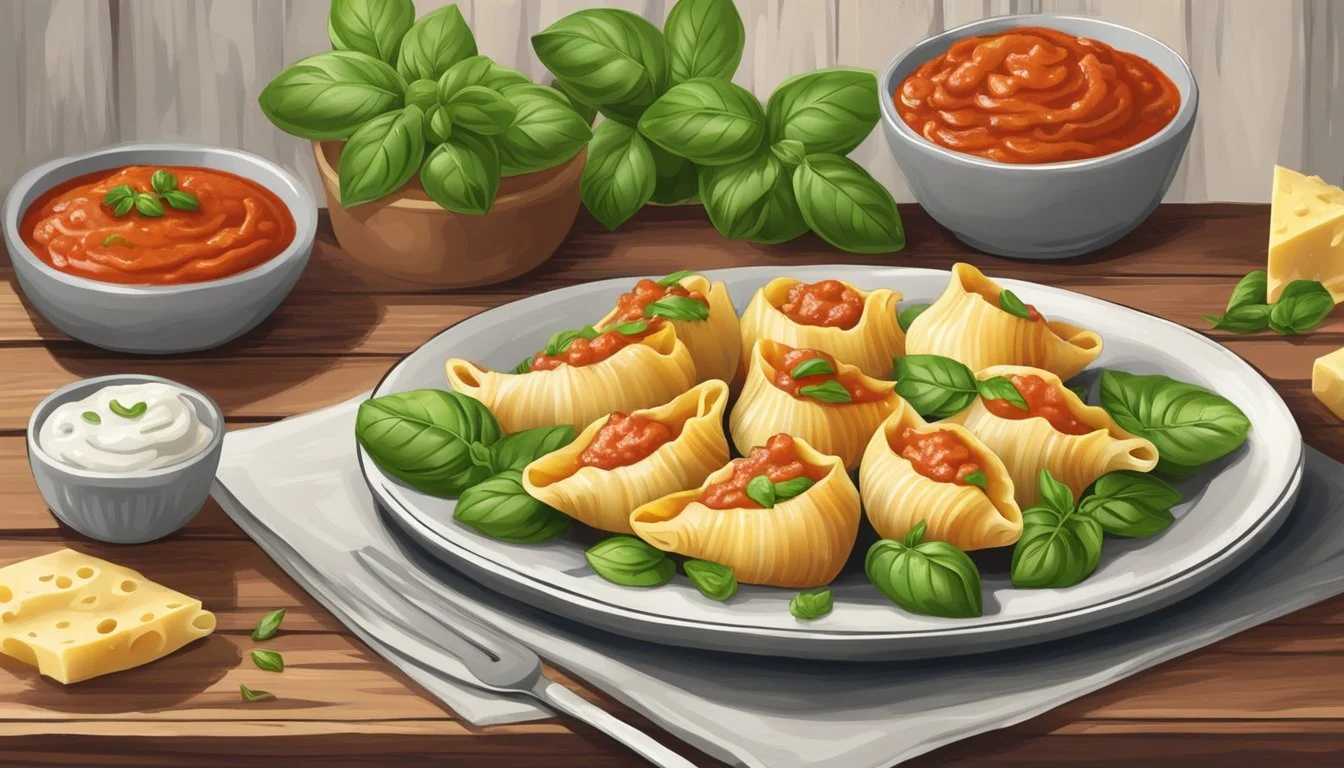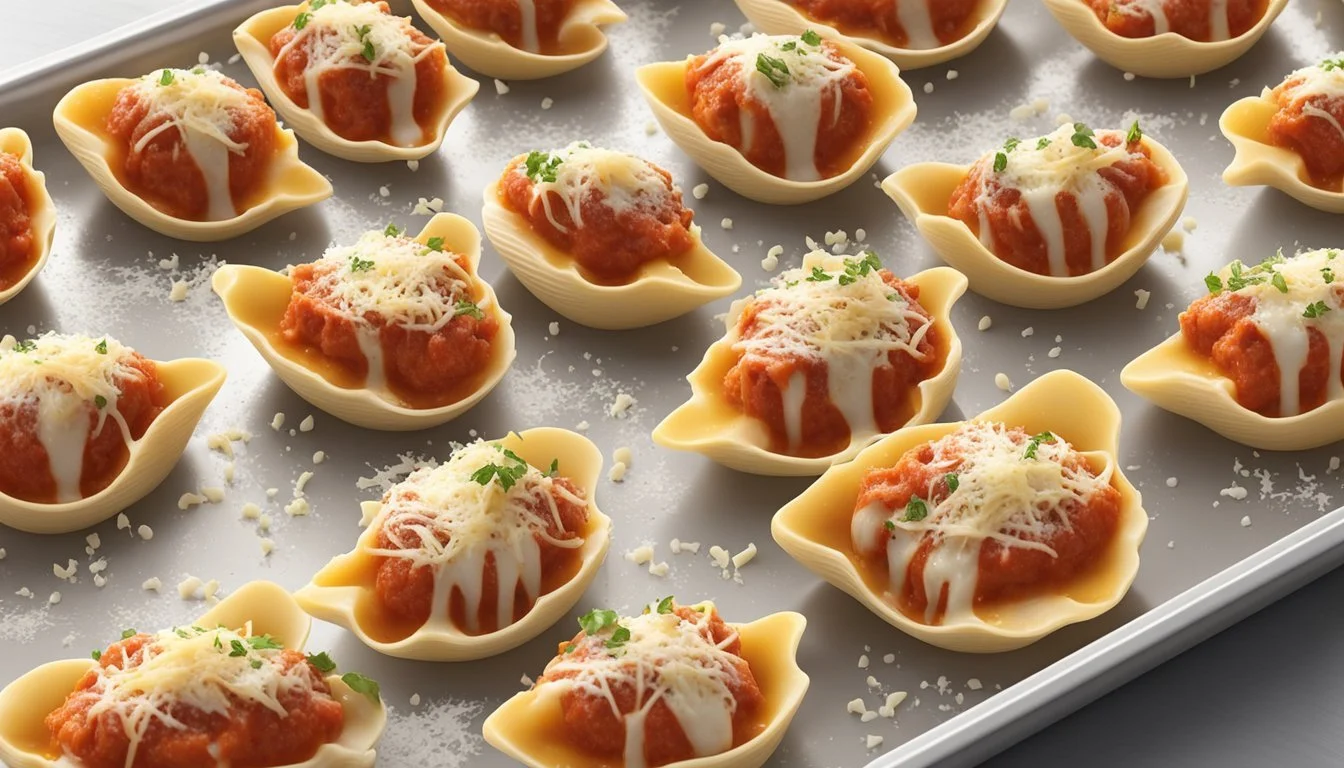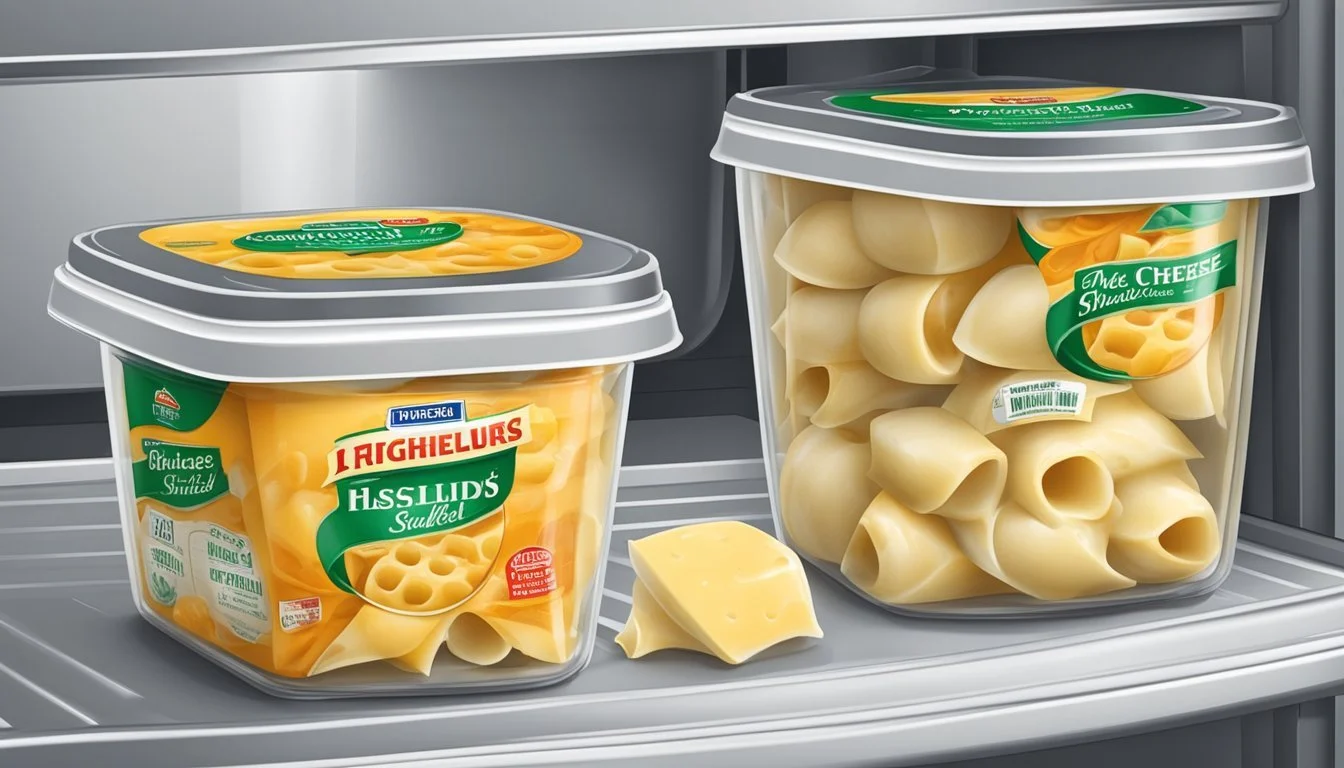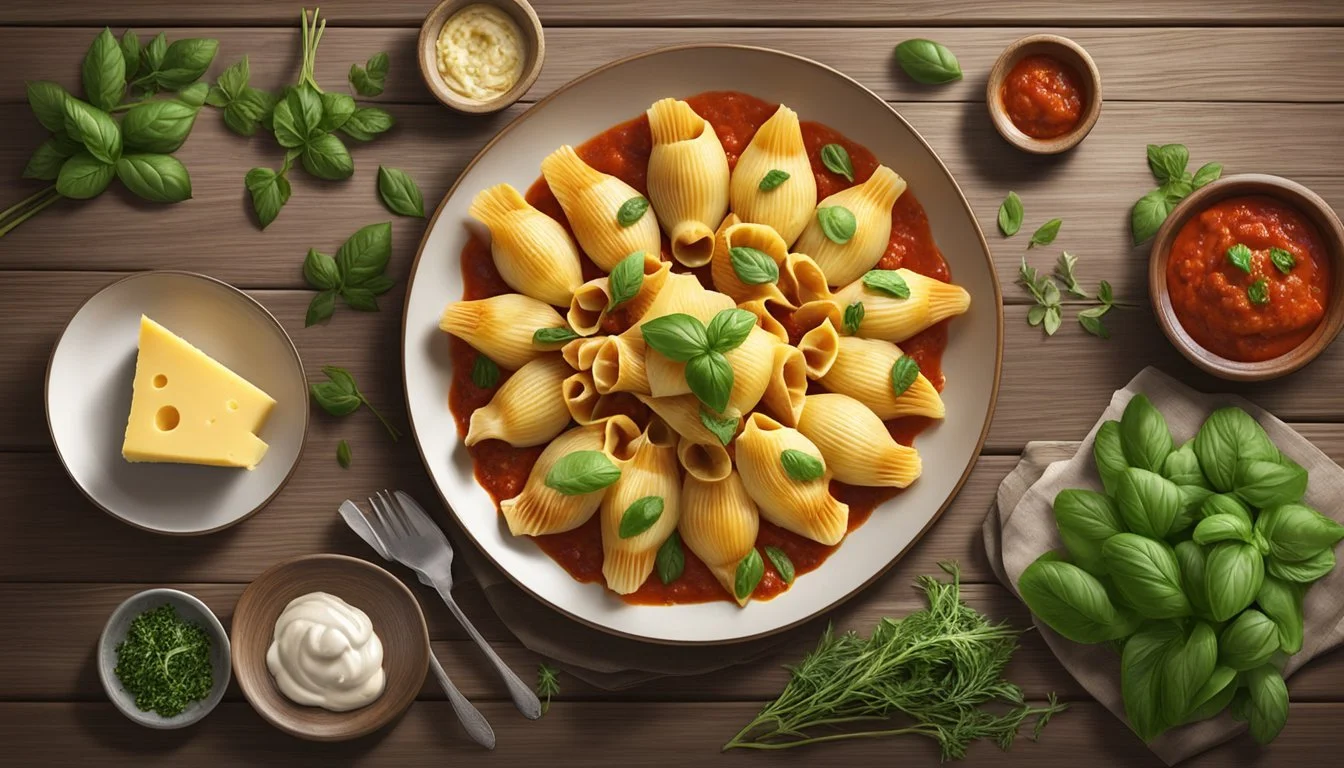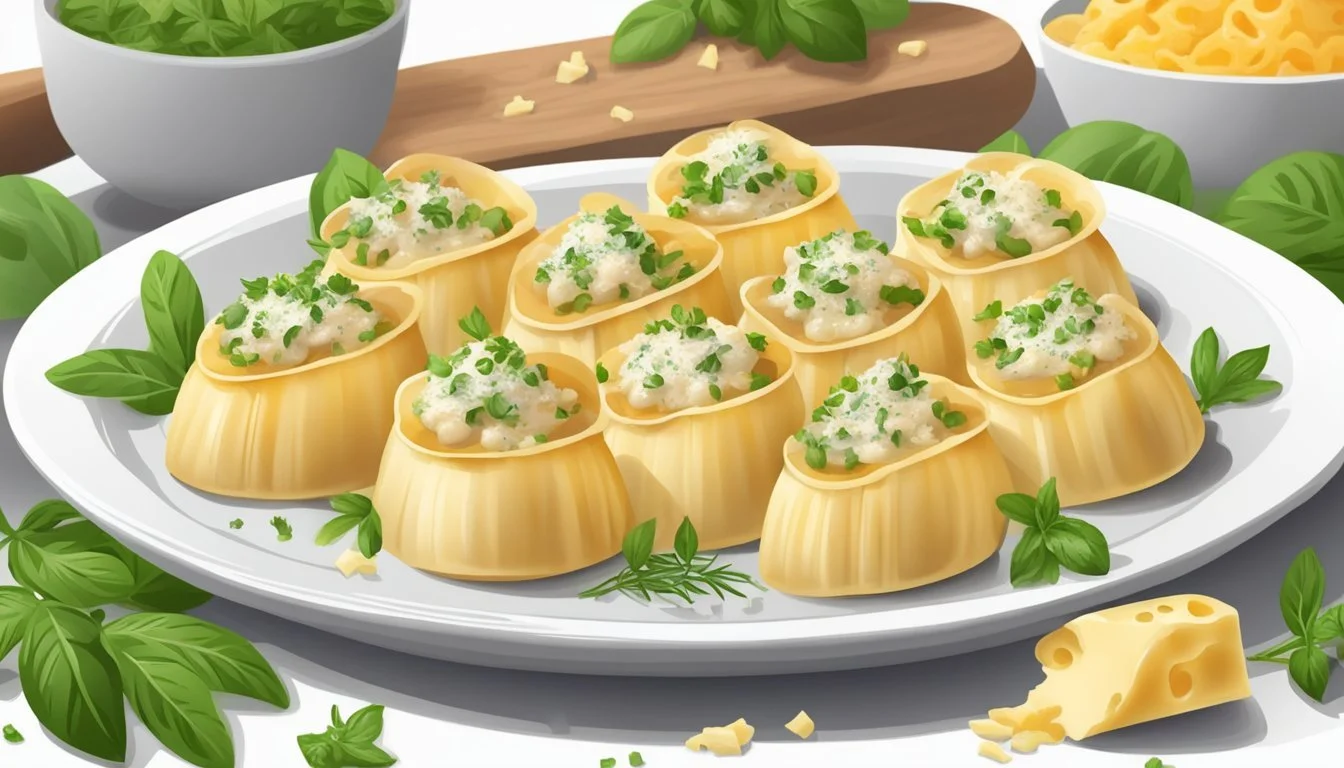How Long Do Cheese Stuffed Shells Last?
Storage Tips and Shelf Life
For those who enjoy cooking and savoring delicious Italian meals, cheese stuffed shells are a favorite dish. A common concern, though, is how long these delectable treats last once they’re prepared. Cooked stuffed shells can safely last in the fridge for 3 to 5 days when stored properly.
Proper storage is essential to maximize their shelf life. After cooking, ensure the shells are cooled and placed in airtight containers within two hours. This helps maintain their freshness and avoid spoilage. Recognizing signs of spoilage such as mold, sliminess, foul odors, and unpleasant flavors is critical to prevent consuming unsafe food.
When in doubt, freezing is a great option. By freezing cheese stuffed shells, you can extend their shelf life significantly, allowing you to enjoy them well beyond the typical refrigeration period. Reheating properly will ensure they taste just as good as when they were first made.
Understanding Stuffed Shells
Stuffed shells are a popular Italian-American dish known for their delicious cheese filling and rich sauce. This section covers their origins, common ingredients, and variations in preparation and filling.
Origins and Popularity
Stuffed shells originated from Italian cuisine, where pasta dishes have long been a staple. The use of jumbo pasta shells filled with cheese and topped with sauce gained popularity in the United States in the mid-20th century.
It became a favorite in many households for its comforting flavors and relatively easy preparation. The blend of cheeses like ricotta, mozzarella, and Parmesan creates a delicious, creamy filling that appeals to many palates.
Ingredients Overview
The primary components of stuffed shells are jumbo pasta shells and the cheese filling. Jumbo shells are made from durum wheat semolina, allowing them to hold their shape well during cooking.
The cheese filling typically includes ricotta cheese for creaminess, mozzarella cheese for meltiness, and Parmesan cheese for a sharp, salty kick. Eggs are often added as a binder.
Various seasonings like garlic, parsley, salt, and pepper enhance the flavor of the cheese mixture. Some recipes include meat or vegetables for additional flavor and texture.
Varieties of Stuffed Shells
While classic stuffed shells feature a cheese filling, there are many variations. Vegetarian versions might include spinach or roasted vegetables mixed with the cheese.
For meat lovers, ground beef, sausage, or chicken can be added. Seafood versions sometimes feature shrimp or crab mixed into the cheese filling.
Different sauces also change the dish's flavor profile. Besides the traditional marinara sauce, Alfredo sauce or pesto can be used for a rich, creamy alternative. These variations allow stuffed shells to be adapted to different tastes and dietary preferences.
Preparation Techniques
Creating a delicious cheese-stuffed shell dish involves several steps, from preparing the stuffing and assembling the shells, to various cooking methods and seasoning tips. Attention to detail in each phase can make a significant difference in the final taste and texture of the dish.
Stuffing and Assembly
Begin by preparing the stuffing, which typically includes whole milk ricotta, shredded mozzarella, and grated parmesan cheese. These cheeses create a rich and creamy filling.
In a large mixing bowl, whisk one or two eggs to help bind the cheeses together. Add minced garlic for a burst of flavor. Season the mixture with salt, pepper, and onion powder. Fresh herbs like basil, oregano, and parsley can further enhance the taste.
Cook the pasta shells until they are just tender. For best results, undercook them by about 2 minutes less than the package instructions. This prevents them from becoming too soft when baked.
Stuff each shell carefully with the cheese mixture using a spoon or a piping bag for a clean, even fill. Place them into a greased baking dish.
Cooking Method Variations
The most common method for cooking stuffed shells is baking them in the oven. Preheat the oven to 350°F (175°C). Spread a layer of marinara sauce on the bottom of the baking dish before placing the stuffed shells to keep them moist and add flavor.
Alternatively, the shells can be cooked via different methods, such as slow-cooking or even air frying. These methods can provide variations in texture and flavor, but traditional baking is often preferred for its consistent results.
For a crispy top layer, sprinkle extra shredded mozzarella or grated parmesan over the shells before baking.
Baking and Seasoning Tips
Before placing the dish in the oven, drizzle a bit of olive oil over the shells to help with browning and to add richness. Cover the baking dish with aluminum foil to keep the moisture in, and bake for about 25-30 minutes.
Remove the foil for the last 10 minutes to allow the cheese on top to become golden and bubbly. Check for doneness by ensuring the cheese is melted and slightly browned.
Seasoning the shells with additional salt, pepper, and perhaps a sprinkle of red pepper flakes can bring out the flavors. Garnish with fresh herbs, such as basil or parsley, for a pop of color and added freshness.
Proper Storage Techniques
Storing cheese stuffed shells correctly can significantly extend their shelf life and maintain their deliciousness. Whether you're looking to keep them for a few days or several months, appropriate methods are essential.
Short-Term Refrigeration
When it comes to short-term storage, refrigeration is crucial. Cooked cheese stuffed shells should be placed in the fridge within two hours of cooking to prevent bacterial growth.
Key points:
Refrigerate promptly: Cool and store in the fridge within two hours.
Use airtight containers: Prevents exposure to air, which can dry out the shells and allow bacteria to multiply.
Consume within 3-5 days: After five days, the quality diminishes, and there's a higher risk of spoilage.
Signs of spoilage: Look out for mold, sliminess, foul odors, and unpleasant flavors.
Freezing for Long-Term
For longer storage, freezing is the best option. Properly frozen cheese stuffed shells can last many months without losing quality.
Steps to freeze stuffed shells:
Pre-freeze individually: Arrange the stuffed shells on a baking sheet and freeze them until solid. This prevents them from sticking together.
Use appropriate wrapping: Once frozen, transfer them to freezer-safe, airtight containers or heavy-duty aluminum foil.
Freeze for 2-3 months: They can be stored without sacrificing taste and texture. Label with the date to keep track of storage time.
Thawing: When ready to consume, thaw in the fridge overnight before reheating.
Containers and Wrapping
Using the right storage containers and wrapping techniques preserves the quality and safety of cheese stuffed shells.
Recommendations:
Airtight containers: Essential for both refrigeration and freezing. They prevent air exposure, which keeps the shells fresh and reduces freezer burn.
Aluminum foil: Effective for wrapping, especially for freezing. It adds an extra layer of protection against moisture loss and odor absorption.
Labeling: Always label containers with the date of storage to ensure you use the oldest batches first, ensuring freshness.
Proper storage techniques are essential for maintaining the quality and safety of cheese stuffed shells, whether stored short-term in the fridge or long-term in the freezer.
Shelf Life Considerations
The longevity of cheese stuffed shells depends on various factors, including signs of freshness, indicators of spoilage, and the specific ingredients used in their preparation.
Freshness Signals
Cheese stuffed shells should be cooled and stored promptly in airtight containers to maintain freshness.
Refrigerating within two hours of cooking helps ensure that they remain safe to eat.
Properly stored, these dishes can last in the fridge for 3 to 5 days. For prolonged storage, freezing is a viable option, keeping the shells edible for up to 2-3 months.
Using fresh ingredients, including good quality cheese and pasta, also aids in extending their freshness.
Spoilage Indicators
Spoiled stuffed shells can be identified by several clear signs.
Mold growth on the surface is an obvious indicator.
A slimy or watery texture suggests degradation of the ingredients.
A sour odor or any foul smell signifies microbial growth, rendering the dish unsafe to eat.
Discoloration in the pasta or cheese filling also points to spoilage.
Regular inspection of stored dishes can help in timely identification and disposal of spoiling food.
Impact of Ingredients on Shelf Life
The ingredients used in cheese stuffed shells significantly influence their shelf life.
Dairy products, particularly the cheese, are prone to spoilage and require careful handling.
Using hard cheeses may slightly extend the shelf life compared to softer varieties due to lower moisture content.
Incorporating fresh meats or vegetables can shorten the time the dish remains fresh in the fridge.
Furthermore, using high-quality ingredients from the start will help, but ensuring they are stored at proper temperatures remains essential to maximizing their edible period.
Reheating and Serving Suggestions
Proper reheating methods can enhance the flavor and texture of cheese stuffed shells. Consider pairing them with fresh salads or roasted vegetables for a complete meal.
Oven Reheating
Oven reheating is ideal for maintaining the texture and flavor of cheese stuffed shells. Preheat the oven to 350°F (175°C).
Place the stuffed shells in an oven-safe dish and add 2 tablespoons of water to keep moisture. Cover the dish with foil to prevent drying out.
Heat for about 25 minutes or until the internal temperature reaches 165°F. Using a meat thermometer can ensure accurate temperature readings.
Oven reheating offers a consistent and evenly distributed warmth, making it perfect for larger portions.
Microwave Tips
Microwaving is a quick method for reheating stuffed shells. Place the shells on a microwave-safe plate. To prevent moisture loss, cover them with a damp paper towel.
Heat on medium power in 1-minute intervals. Check after each interval until heated through. This avoids overcooking and ensures the shells remain juicy.
Microwave reheating is best suited for small portions or when time is limited. Be cautious with microwave times as too long can lead to dry or rubbery shells.
Combining with Side Dishes
Serve reheated cheese stuffed shells with a variety of side dishes for a balanced meal. Cucumber salad or Caprese salad offers a refreshing contrast to the rich, cheesy shells.
Roasted vegetables like carrots, bell peppers, and zucchini complement the dish well and add nutritional variety.
Adding a green salad with mixed greens and a light vinaigrette can balance the richness of the stuffed shells. These combinations not only enhance the meal but also add color and texture to your plate.
Pairing these sides ensures a delightful dining experience, making cheese stuffed shells a versatile and satisfying option for any dinner.
Nutritional Information
Cheese stuffed shells are a popular dish, featuring a blend of cheeses and pasta. This section provides key nutritional information to help guide dietary choices.
Calories: A serving of three cheese stuffed shells typically contains around 380 calories.
Macronutrients:
Protein: 20.52g
Carbohydrates: 36.13g
Fat: 15.5g (approximately 40% of the total calories)
Vitamins and Minerals:
Calcium: Rich in calcium due to the cheese content.
Iron: Contains iron, though primarily in small amounts.
Other Nutritional Components:
Fiber: Usually low, depends on any additional ingredients used, such as vegetables.
Sodium: Can be high, especially with added seasoning and cheese varieties.
Cholesterol: Present due to the cheese and eggs.
Serving Sizes: Typical serving sizes vary. Standard is usually 1-3 shells, depending on recipe and portion control preferences.
Cheese Varieties: Different recipes use a blend of cheeses like ricotta, mozzarella, and Parmesan, each contributing to the overall nutritional profile.
Preparation Methods: Cooking methods might slightly alter the nutritional content, especially if additional oils or sauces are used.
By examining these aspects, one can better understand the nutritional context of cheese stuffed shells.
Creative Variations and Enhancements
Cheese-stuffed shells provide a versatile base for creative variations. From experimenting with different cheeses to adding meats, vegetables, and alternative sauces, there are numerous ways to enhance this classic dish.
Incorporating Different Cheeses
Different cheeses can dramatically change the flavor and texture of stuffed shells. Ricotta, mozzarella, and Parmesan are traditional options, but other cheeses like Pecorino Romano, Gouda, and Asiago can add unique tastes.
Using a mixture of soft and hard cheeses creates a pleasing blend of creaminess and sharpness. Fresh herbs such as basil, parsley, and oregano can be combined with the cheese blend to introduce fresh, aromatic flavors. Incorporating cheeses with varying melt points can yield a more textured and delightful dish.
Meat and Vegetable Add-Ins
Adding proteins like ground beef, Italian sausage, or chicken can make the dish more substantial. Ground beef and Italian sausage offer a savory richness, while chicken provides a lighter protein option.
Vegetable add-ins such as spinach, bell peppers, mushrooms, and zucchini can add both texture and nutrients. Fresh spinach works particularly well when mixed with the cheese filling, and roasted bell peppers offer a sweet, charred flavor. Pre-cooking vegetables ensures they are tender and well-integrated into the shells.
Alternative Sauce Ideas
While classic marinara sauce is a favorite, exploring other sauces can refresh the dish. Tomato basil sauce and homemade marinara bring fresh, robust flavors. For a creamier option, consider an alfredo sauce or a bechamel.
Pesto sauces, with their fresh basil and garlic notes, complement the cheesy filling beautifully. Vodka sauce combines the richness of cream with the acidity of tomatoes. Experimenting with sauces allows for a range of flavor profiles, enhancing the stuffed shells to suit various tastes.
Advanced Preparation Strategies
To save time and ensure maximum freshness, effective preparation strategies are essential. By making cheese stuffed shells ahead of time, or batch cooking and freezing, one can streamline the cooking process while maintaining flavor and texture.
Make-Ahead Tips
Prepare Ingredients: Gather and prepare all ingredients beforehand. This includes cooking the pasta shells, preparing the cheese filling, and optionally cooking any additional elements like ground meat.
Assemble and Refrigerate: Assemble the stuffed shells but do not bake them immediately. Cover the dish tightly with plastic wrap or aluminum foil and refrigerate for up to 24 hours before baking. This allows for a quick transition from fridge to oven when ready to cook.
Proper Storage: Use airtight containers to avoid any absorption of fridge odors and prevent moisture loss. Label the containers with the date and contents for easy identification and to ensure optimal freshness.
Batch Cooking and Freezing
Large Batch Cooking: When preparing cheese stuffed shells, consider making a large batch. This reduces the overall preparation time per meal and provides multiple servings for future use.
Freezing Method: Once assembled, place the stuffed shells in a single layer on a baking sheet and freeze until solid. Transfer the frozen shells to airtight containers or freezer bags, removing excess air to reduce the risk of freezer burn.
Thawing and Baking: When ready to use, thaw the frozen stuffed shells in the refrigerator overnight. Bake at 350°F (175°C) as per the usual cooking time of 25-30 minutes, ensuring that they are heated through.
These methods provide flexibility and convenience, ensuring that delicious cheese stuffed shells are readily available whenever needed.


